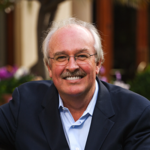
By IAN MORRISON
I have been studying American healthcare for more than 40 years and I have assembled a large number of one-liners over the years. As we enter 2022, I thought I’d share my 22 oldest jokes and why they still matter.
Coming to America
- I grew up in Glasgow, Scotland. In Glasgow, healthcare is a right, carrying a machine gun is a privilege. America got it the wrong way round.
Gun violence continues to ravage the United States. We have more guns than people. Kids get gunned down in school playgrounds and classrooms routinely. It happened once in Dunblane, Scotland in 1996 when a local shopkeeper walked into Dunblane Primary School and opened fire, killing 16 5- and 6-year-olds and their 45-year-old teacher. It so galvanized public opinion, according to Smithsonian Magazine: “By the end of 1997, Parliament had banned private ownership of most handguns, including a semi-automatic weapons ban and required mandatory registration for shotgun owners”.
Last time I looked, gun violence was the second leading cause of death in children in the US. In America when we have mass shootings all we get are thoughts and prayers.
And when it comes to healthcare as a right, even if we Build Back Better, it won’t be a right for millions of American residents, especially those who are undocumented.
- I am a Scottish Canadian Californian which gives me a unique perspective on healthcare (and all things to do with healthcare, including death and dying) because the Scots see death as imminent, Canadians see death as inevitable, and Californians see death as optional.
This is one of my oldest jokes and it remains true. In Silicon Valley, where I live, my affluent VC friends want to live forever and are working out and taking supplements to achieve that. In contrast, my British friend Dr. Richard Smith (former Editor of the BMJ) is sitting on the Lancet Commission on the Value of Death. Enough said.
Continue reading…
















